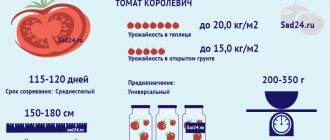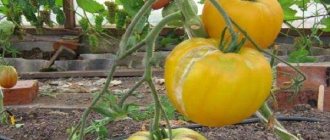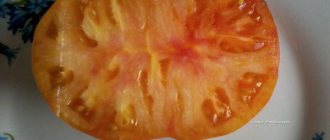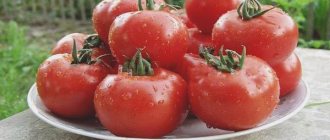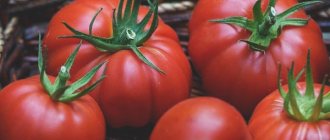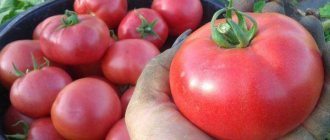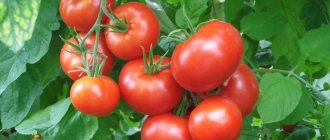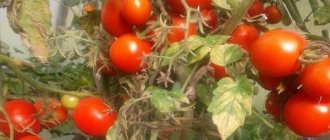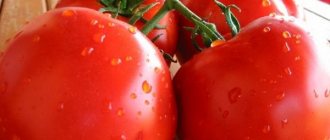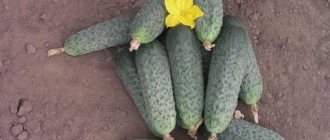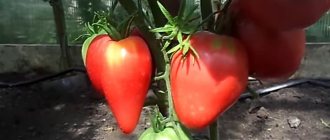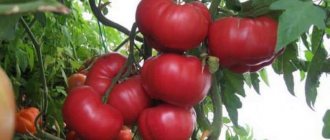The Maximka tomato has earned the interest of farmers and gardeners. The variety is grown on an industrial scale and in gardens. It is characterized by high productivity, excellent product and taste qualities. An important advantage is endurance and resistance to adverse factors.
| Height | Landing location | Ripening time | Fruit color | Fruit size | Origin | Fruit shape |
| short | Greenhouse, Open ground | Ultra early | Reds | Average | Variety | Flat-round |
Tomato Maksimka reviews photos
Tomatoes have long been at the top of the ranking of the most popular plants among gardeners. Every year the number of varieties increases thanks to the work of breeders around the world. The Maksimka tomato has become another new product of Russian selection. The originators were large companies, Poisk and VNIIO.
General information about the plant
The Maximka tomato variety is registered in the State Register and is recommended for open ground in the Central and Central Black Earth regions. Reviews from gardeners confirm the possibility of cultivation in places with less suitable climate and soil, provided that a greenhouse and film covers are used. Description of the appearance of the tomato and technical characteristics:
- Early ripening, berries can be picked after 75–80 days.
- Determinant.
- Semi-spreading.
- Medium branched.
- Medium leafy.
- The green foliage is medium in size.
- Inflorescence of intermediate type.
- The first inflorescence is formed above the 6th–7th leaf.
- There is no articulation with the stalk.
- Short, height no more than 60 centimeters.
- Good yield, up to 459 centners per hectare of land.
- Up to 92% yield of marketable fruits.
- Complex resistance to many nightshade diseases.
- Suitable for long-term storage and transportation.
A distinctive feature of the variety is the ultra-early ripening of fruits. Features and technical data of the berry:
- Small, weighing up to 100 grams.
- Flat-round shape.
- Light green color before ripening.
- Orange-red color when mature.
- The number of nests is more than 4 pieces.
- Smooth.
- Thin skin.
- Not prone to cracking.
- Medium density.
- Not watery.
- Juicy.
- Sweet taste.
- No sourness.
IMPORTANT! The fruit contains no more than 7.9% dry matter in the juice.
The Maximka variety has good taste. The fruits are suitable for fresh consumption. They are added to salads, used for self-consumption, and added as an ingredient to pizza and other dishes. The tomato is suitable for whole-fruit canning, twisting and pickling.
Recommendations for cultivation
For the variety, the seedling planting method is preferred. Planting of seeds begins in mid-spring. To grow seeds, you will need separate containers with universal soil for the nightshade family. Seedlings require maintaining temperature conditions, organizing lighting and watering. The heat-loving plant grows well at air temperatures of at least 20 degrees and requires at least 16 hours of daylight.
IMPORTANT! Before transplanting, seedlings require hardening.
The low-growing plant successfully bears fruit when planted densely, up to 5 tomatoes per square meter of land. Further cultivation comes down to following simple rules of agricultural technology: watering, loosening and fertilizing, removing weeds.
Gardeners' opinion
Good day! This summer I planted Maksimka tomatoes. The variety is characterized by a small bush height; it can be planted densely. The fruits ripen very quickly, in 80 days. The quality of the berries is excellent. Small, but very sweet tomatoes are suitable for fresh consumption and spinning. I recommend!
Yaroslav Khanov, 63 years old
Good afternoon! I planted different varieties of tomatoes, I want to highlight the Maximka tomatoes. A very easy to care for, disease resistant and productive plant. The fruits are suitable for canning, pickling, and often added to salads. They keep for a long time, I advise!
The Maximka tomato was created by Russian breeders for cultivation in open ground. This hybrid is registered in the State Register of Russia. Tomatoes of this type are recommended to be grown by farmers and gardeners who live in the Central and Central Black Earth regions of the country. But if all agrotechnical standards are observed, it is possible to grow Maximka tomatoes in film greenhouses in other territories of the Russian Federation, although the yield of the variety will be 30% less than in the indicated regions of Russia. Consumers note the high taste of the berries of this variety.
Some information about the plant and its fruits
The characteristics and description of the Maximka variety are as follows:
- The tomato ripens quite early. It takes 75-80 days from planting seedlings to harvesting.
- The bushes of the plant have an average number of leaves and branches. The variety belongs to the type of determinate, semi-spreading tomatoes.
- The height of the plant does not exceed 55-60 cm.
- The leaves on the bushes are green and medium in size.
- On the Maximka tomato, inflorescences belonging to the intermediate type are formed. The first inflorescence appears at the 7th leaf level.
- This variety differs from others in the absence of articulations near the stalk.
- Tomatoes of this variety weigh about 0.1 kg.
- The fruits are spherical in shape, slightly flattened at the top and bottom. Before ripening, they are green in color, and when ripe they become orange-red. There are 4 seed chambers inside the berries. The tomato skin is smooth and thin. The fruits have a sweet taste. The juice of the berries contains up to 7.8% dry matter.
Reviews from those farmers who planted the described plant show that the yield of the Maximka variety can reach 450 c/ha.
Almost 90-92% of the fruits have a good presentation. Those farmers who planted this tomato in the southern or northern parts of Russia claim that the plant resists well many diseases characteristic of tomatoes.
Growing this variety turned out to be beneficial for farms, since the fruits are of medium density and do not crack when transported over long distances. This increased the interest of trading companies in purchasing tomatoes of the described type.
The fruits can be consumed fresh or added to salads and other dishes. For the winter, it is recommended to pickle or preserve Maksimka tomatoes whole.
The popularity of tomatoes among gardeners makes this crop one of the most popular. For this reason, breeders in many countries develop new varieties every year. One of these new products was the Maximka tomato, which belongs to a Russian selection, for summer residents and gardeners.
Information about the variety
The Maksimka tomato was bred for cultivation in uncovered soil in the regions of Central Russia and the Central Black Earth Region, in the climate of the middle zone. However, gardeners familiar with it claim the possibility of cultivating the variety in more severe climate and soil conditions using greenhouses and film shelters. The variety has passed the registration procedure in the State Register.
Description and characteristics
The Maksimka tomato plant belongs to the early ripening varieties and has characteristic features:
- The bush is low-growing (up to 60 cm), semi-spreading, medium-branched.
- The number and size of leaves are average.
- The type of inflorescence is intermediate (the first of them appears above the 6th or 7th leaf).
- The fruits begin to ripen 75–80 days after planting, the percentage of compliance with the product standard is 92.
- The variety has no articulation with the stalk.
- The plant is resistant to many diseases of its species.
- With good yields, the fruits are stored for a long time and tolerate transportation conditions.
The Maximka tomato is small in weight (less than 100 g), flat-round in shape, smooth, the color of the fruit at technical ripeness is orange-red, before ripening it is light green. The pulp is medium dense, the skin is delicate and thin, the fruit is not prone to cracking. The taste is sweet, without a sour aftertaste, juicy, meaty.
Tomato "Yablonka Rossii" - an early ripening variety for open ground
“Apple Tree of Russia” is only slightly inferior in popularity to the “Sanka” variety. To some extent, these are competing varieties - both were created for open ground, both are early ripening and both give a good harvest for open ground. True, in my opinion, “Sanka” tastes better. However, first things first.
The tomato variety “Yablonka Rossii” was bred by it is not entirely clear who. The list of authors includes the name of Vladislav Korochkin, the president of the group, but it is unlikely that he himself was involved in selection work. Viktor Anatolyevich Vasilevsky from the All-Russian Research Institute of Selection and Seed Production of Vegetable Crops and other specialists are also mentioned among the co-authors. The originator of the variety is NK LTD, which is directly related to the Russian Vegetable Garden.
The variety was registered in the Register in 2000. It also went on sale around the same time.
In the 90s, the Tamina tomato variety, which was quite similar in appearance to YAR, was quite popular. Sometimes both names are indicated on seed packets. In the Register, however, the Tamina tomato variety is not mentioned anywhere.
Characteristics
| Type | determinant |
| Plant height | about 100 cm |
| Fruit | Round, smooth, weighing up to 80 grams, red |
| Taste | good |
| Ripening period | early, about 90 days |
| Disease resistance | no convincing data |
Description
“Yablonka Rossii” is a determinate, medium-growing variety. The height of the bush is usually about a meter or a little more, but in greenhouses some amateur gardeners have it. This is a standard tomato: “Apple tree” forms a fairly compact bush with a thick stem and medium-sized “potato” leaves. The tomato, of course, needs to be tied up, but it’s quite late.
The first inflorescence is laid over 7-9 leaves, the subsequent ones - after 2 leaves. Inflorescences can be simple or intermediate (with one branch), the stalk with an articulation.
Tomatoes “Yablonka Rossii” are round, with a smooth surface, weighing up to 80 grams. Unripe tomatoes are light green, ripe ones are deep red. Nest with seeds. The taste is good. Recommended for use for whole-fruit canning, but also suitable for salads and for processing into pastes.
Features of cultivation
The “Yablonka Rossii” tomato is approved for cultivation in all regions of the Russian Federation as a variety for open ground. I grew it in 2015 and plan to grow it in 2021. It is a fairly unpretentious and stable variety.
The 60 x 50 planting scheme worked well. I fully formed some plants into three stems, and some I didn’t plant at all. There were only a few specimens in each group: therefore, unambiguous conclusions cannot be drawn, but in general, the non-stepchildren seemed to me more productive. By the end of August, absolutely all the tomatoes had time to ripen, but August 2015 was very hot.
The variety is early ripening - ripening begins approximately 90 days after emergence, even in open ground. Probably, in a greenhouse you can get a harvest even earlier.
The register states that the variety is characterized by uniform ripening of fruits, but for me the fruiting and ripening were rather extended. Productivity according to the register is 5.3...5.6 kg/m2. I didn’t document the yield on my bushes, but I feel like each plant produced at least 2 kg of marketable tomatoes. In terms of per square meter this will give more than 6 kg.
Advantages
- possibility of growing in open ground;
- ease of cultivation;
- early ripening;
- uniformity of tomatoes in size;
- relatively high yield.
Tomatoes Max: photo, variety features
| Ripening period: | early ripening, 95-105 days |
| Shape, weight of fruits: | flat-rounded, average weight 110-130 g |
| Bush type: | determinant |
| Growing regions: | has proven itself in all latitudes |
| Productivity: | 5 kg/sq. m |
Tomato Max is one of the popular varieties, suitable for growing in all regions of the country. This resilient, unpretentious plant produces an excellent early harvest even under the hands of inexperienced, novice gardeners. It will appeal to experienced vegetable growers for its diverse benefits.
Characteristics and description of the Max variety
Max tomatoes have been known to gardeners since 1998, when they were introduced by Poisk-Plus JSC. They are equally suitable for growing both in open beds and in greenhouse conditions. It is recommended to place tomatoes in closed ground if you want to “squeeze” maximum yield from the crop.
Semi-spreading bushes are distinguished by medium-level branching and foliage. Max belongs to varieties with limited stem growth and does not exceed 70 cm in height. The leaves are light green, slightly corrugated.
The plant forms simple intermediate inflorescences - the first is formed above the 6-7th leaf, the next - after 1-2 leaves.
4-5 ovaries are formed on each inflorescence. The largest fruits grow on the middle part of the stem.
Flat-round, bright red tomatoes ripen together. There are at least 4 seed chambers in a tomato. Behind the dense skin, which partly provides the vegetables with good shelf life, lies a fleshy, juicy pulp with high taste qualities. The characteristic tomato taste is dominated by sweetness and barely noticeable sourness.
The Max variety is distinguished by its culinary versatility - these tomatoes can be used for making salads, homemade ketchup, juice and canning.
Features of cultivation and care
The dates for sowing seeds should be planned taking into account the fact that Max is planted in open ground at the end of May - early June, in closed ground - in early May.
In the northern regions and the middle zone, for the full development of the plant, it is recommended to sow seeds for seedlings 60 days before the expected date of planting them in open beds or in a greenhouse; in the southern regions, this period can be reduced to 55 days.
To plant Max tomatoes, it is recommended to set aside an area where carrots, zucchini, cucumbers, cabbage, and salads grew last year.
The cultivar is not picky about soil, but feels best on sandy loam soil.
For full development, it is recommended to plant no more than 6 bushes per 1 square meter.
Max loves sunlight, but in principle, he grows well and bears fruit even in conditions where daylight hours last for 8.5-9 hours. Experienced gardeners advise, if there is a lack of sun, to increase illumination to 10 hours a day using LED lamps.
Tomato Max belongs to that convenient group that does not require tying or pinching for care.
When growing a variety in a greenhouse, you should maintain the air temperature in it no higher than 23-25 ° C, and also ventilate it regularly.
Both in the ground and in closed ground, it is important to weed weeds in a timely manner and loosen the soil after each watering. In not very hot summers, it is enough to water the tomatoes 2-3 times a week.
Diseases and pests of the variety
The Max tomato variety is highly resistant to diseases and pests. According to some gardeners, these tomatoes are still susceptible to fungal infections if the rules of agricultural cultivation are not followed.
Blackleg is highly likely to affect young Max seedlings in the greenhouse. Symptoms are blackening and drying of the basal part of the stem, the appearance of a scattering of dark spots on the leaves. The bush may die.
To prevent blackleg, preventive measures are important - plants should not be thickened when planting and should not be over-watered. It is also recommended to add ash to the soil (100 g per 1 sq. m of planting) to reduce the acidity favorable to the disease.
Long-term observations have shown that mole crickets in greenhouses and open ground can harm Max. They attack the roots of the plant. Marigolds planted next to tomatoes or fresh green aspen stakes stuck between the rows are good repels for the pest. You can also bury eggshells flavored with fragrant vegetable oil in the planting holes - for the mole cricket it is poison, and for the crop it is fertilizer. Of the chemicals, the Grizzly remedy helps.
Advantages and disadvantages
Max tomatoes have many features that explain their popularity:
- simultaneous ripening of early harvest;
- the highly valued taste of the fruit and its versatility in terms of culinary processing;
- the attractive appearance of the fruit and the fact that up to 97% of the harvest can be used for sale;
- crack resistance;
- good immunity to nightshade diseases;
- cultivation available in open and closed ground;
- it is not necessary to pin and strengthen with trunks;
- the bush does not exceed the height determined by selection;
- ease of care;
- endurance and adaptability, allowing them to be grown in any climatic zone.
Max tomatoes do not have the highest yield. Tomatoes are also sensitive to heat, in which they need daily watering, and if there is too much direct sunlight, they can lose up to 20% of their ovaries.
Similar varieties
According to the characteristics and description of the variety, Tomato Max is similar to other hybrids:
- Aphrodite F1;
- Fry F1;
- Siberian early ripening.
Aphrodite F1 is an ultra-early hybrid of the determinate type. The fruits are round, bright red, rich in taste, weighing about 100 g. The harvest can be harvested after 2.5 months. With proper care, fruiting extends until September. According to reviews, obtaining the declared yield of 12 kg is difficult to achieve without industrial technologies and it is better not to chase quantity, preferring quality. So you should count on 6-8 kg/sq. m. The variety is resistant to fungal diseases.
The fry is an early ripening hybrid with a harvest 90-100 days after the start of the growing season. The determinate type of bush does not allow the stem to grow more than 65 cm high. The average weight of bright scarlet fruits is 100-120 g. Tomatoes are very tasty and aromatic. Productivity per sq. m. – 6 kg. The tomato is adapted to adverse weather conditions.
Tomato seeds Winner, 100 g
Description
Tomato seeds Winner - excellent taste!
We offer to buy tomato seeds at low prices in Ukraine. Tomato seeds Winner - the taste of fresh fruits is good. The yield of ripe marketable fruits is 84-96%. Mid-early determinate variety. The period from germination to ripening is 110 - 115 days. A plant with medium-sized light green leaves, 65–75 cm high, the stalk without articulation. The brush is complex, the first one is laid over the 7th - 8th sheet, the subsequent ones - after 1 - 2 sheets. 7–8 fruits are formed on each brush. The fruit is elongated oval in shape with a slope towards the apex, medium ribbed, dense. The color of the unripe fruit is light green, the mature one is red. Number of nests 3-4. Fruit weight 70-141 g. The variety is recommended for fresh consumption and processing. Salad, canned. Transportable. Suitable for one-time mechanical cleaning.
Agricultural technology.
Such beloved vegetables as tomatoes are grown, as a rule, in two ways - either directly in the ground or by seedlings. If you want to get an earlier harvest, you need to plant seedlings. With this method, it is better to use special pots and grow tomato seeds in them. In this case, you need to sow at the very beginning of March and grow for about two months, after which you can transplant into the ground. When planting early, the beds need to be covered with film. Don't forget that this is a heat-loving plant. The Pobeditel tomato, like any other tomato, should be fertilized with fertilizers throughout the entire growing season. Tomatoes also require regular watering.
Sowing and harvesting tomatoes Winner
All descriptions of agricultural technology are advisory in nature and the results obtained during cultivation depend on the cultivation technology and agroclimatic conditions.
Other popular products for home, garden, vegetable garden!
Full list of goods from the “7sotok” store in the price list
Your order can be delivered at a time convenient for you to all regions and cities of Ukraine.
Tomato Max: characteristics and description of the variety, yield with photos
Characteristics of this variety
There are must-have varieties that I always plant every year. I like them not only for their taste and unpretentiousness, but also for the way they look on the bush. I’ll paraphrase one bearded joke: “I don’t really like tomatoes... But the process itself...”. I love going into the greenhouse and admiring the tomato plantations. And I don’t hesitate to show off my particularly spectacular huge tomatoes to my neighbors, and then post photos on the forum. It’s a shame to hide it – we all love it!
The following varieties are among the favorites also because they do not need to be fanatically cultivated and shaped. And they will always give a harvest: small, large, and a lot, depending on the variety and what I grow them for - for salads, for preparations, or, the smallest and sweetest ones, so that “like seeds, they click.” .
The “Rocket” variety is suitable for both greenhouses and open ground. The fruits are identical in shape and sweet. We love to eat them by the handful. Look good in blanks. The bush requires garter, despite the fact that the package says the opposite. This is because a lot of fruits grow, and the bush bends from the weight. Its height in open ground is about 40 cm, and in a greenhouse it can reach up to 60 cm. This is a mid-season variety; it does not need to be pinched.
Rice. 1. “Rocket” matures smoothly and is well stored in both technical and biological maturity.
I got the “Big Man” variety from a neighbor. During a tour of her greenhouse, I really liked the way it looked on the bush. The neighbor said that she has been planting it for a long time, that it is unpretentious and always sets fruit, even if the ventilation regime in the greenhouse is not followed. Of course, I took one fruit for seeding. “Zdorovyak” can grow up to 100 cm in height, so it is better to grow it in a greenhouse, although it produces large tomatoes in open ground.
Rice. 2. There is almost no need to pin the “Big Man” wrist.
Rice. 3. It ripens in batches, gradually, which is very convenient.
Among the vigorous-growing tomatoes with large fruits, I singled out the “Red Giant” variety. This amateur variety was bred by simple gardeners. Despite the fact that it grows a lot of leaves, it does not have to be pruned too often. The fruits on the lower tiers are the largest. If I had not been lazy and plucked out the inflorescences, leaving no more than 3-4 in the brush, the fruits would have been even larger. It is fleshy inside and contains few seeds.
Rice. 4. “Red Giant” in mid-July.
Rice. 5. You can take your own seeds, but the fruit must ripen on the bush and come from the second cluster from the bottom.
Rice. 6. The fruits are slightly ribbed, quite transportable, there is never a yellow-pink top from unbalanced care, as in pink-fruited varieties.
Rice. 7. Both the side of the stalk and the reverse side always have a marketable appearance.
Rice. 8. The only drawback of the “Red Giant” is that the largest fruits require a garter.
However, almost all large-fruited tomatoes require additional tying of the brushes. Except for my next favorite, Bull's Heart. I also always grow it year after year, as my grandmother advised me. “He will never let you down!” - she said, and every year I am convinced of this. Even if I took my own seeds and not factory ones, “Bull’s Heart” invariably bears fruit and does not require pinching at all, although it is vigorous.
Rice. 9. The hands grow in such a way that they do not need to be additionally secured with a garter to prevent them from falling.
Rice. 10. There is one feature of the “Bull’s Heart” - a predisposition to the formation of such gnarled fruits.
Therefore, if you see a bud or flower that is too large, feel free to cut it with scissors, it will still take a long time to ripen, even though it will be large, the skin will be hard and gray, you cannot take seeds from it.
Rice. 11. But the bulk of the “Bull’s Heart” fruits are very beautiful, tasty and fleshy. By the way, this variety comes in both orange and red.
In terms of ripening time, this variety belongs to the early varieties of tomatoes. The harvest begins 95-105 days after planting the seeds. The bush is semi-spreading, the foliage is average, the branching is also average. The plant reaches a height of 60-70 cm.
Simple intermediate inflorescences form on the branches: the first - above 6-7 leaves, the next - after 1-2 leaves.
The fruits have a regular round shape and are slightly flattened. The size of ripe tomatoes reaches 110-120 grams. The color of ripe vegetables is rich red. Each vegetable contains at least 4 chambers. The taste of the fruit is excellent: sweet, fleshy, with a pleasant sourness.
The stated description of the variety indicates the versatility of using tomatoes. They can be consumed fresh and in the form of salads, and can be processed into juice, ketchup, and sauce. They are used stewed and boiled. These tomatoes look great marinated or salted in jars for the winter. The high yield of tomatoes allows them to be used both on an industrial scale and for private use and cultivation in summer cottages.
A characteristic feature of this variety is the different growing methods. The plant can be left without a garter and not pinched. But you can also tie it up and perform stepsoning. If you nevertheless decide to plant tomatoes during the growing season, then as a result you will get much higher yields, larger fruit sizes and earlier ripening.
Fruit characteristics
The characteristics and description of the variety indicate that Superbomb is a high-yielding tomato that produces a lot of fruit. With high-quality plant care, you can collect 6-7 kg from each bush.
The fruits themselves are very tasty. They have a flat-round shape and smooth walls. Tomatoes are bright and have rich color. One of the features of this variety is the size of the tomatoes. On average, each tomato weighs 400 g. But there are also tomatoes that weigh more than 600 g. The fruits are fleshy and very sweet. They will be a great addition to salads. In addition, these tomatoes make delicious juices and sauces.
Tomatoes have a fairly soft skin, so eating them fresh is very pleasant. But they are not entirely suitable for long-term storage, as well as for pickling in general.
- In terms of ripening, our hero is classified as mid-season. It begins to ripen approximately 110 days after the appearance of complete growths. But weather conditions can affect this indicator, either shortening or increasing the period;
- maturation occurs together. Several fruits ripen in the cluster at the same time;
- The yield of marketable fruits in open ground, according to the State Register, was 10.1 - 10.2 kg per 1 square meter. Vegetable growers overwhelmingly confirm the good productivity of tomatoes. Moreover, high rates are possible even in an ordinary garden bed. In prosperous years in the greenhouse, 7 kg was removed from one plant. And only a few reviews indicate that the yield has failed;
- A companion to the high productivity of the variety is its excellent adaptability to unfavorable conditions. When it's cold outside, in the greenhouse our hero begins to be one of the first to harvest. Even in the heat it does not shed its flowers and does not dry out;
- There is no information about the immunity of the variety in the State Register. Various sources indicate weak resistance to Alternaria and late blight. Prevention of these diseases should not be neglected;
- Among the pests that can cause trouble for Superbomb are: whitefly, wireworm, and mole cricket;
- In cold summers, tomato flowers may suffer from doubleness, causing the fruit to be uneven. But this does not affect the taste. If you do not like deformed tomatoes, then at the flowering stage you should remove all double flowers;
- Transportability is at an average level. Harvesting and transportation of crops should be carried out carefully;
- keeping quality is not high enough;
- method of use is universal. In the State Register, our hero is marked as salad. But housewives praise the high-quality tomato products that are obtained from the fruit.
Tomato Maximka - description and characteristics of the variety
The popularity of tomatoes among gardeners makes this crop one of the most popular. For this reason, breeders in many countries develop new varieties every year. One of these new products was the Maximka tomato, which belongs to a Russian selection, for summer residents and gardeners.
Information about the variety
The Maksimka tomato was bred for cultivation in uncovered soil in the regions of Central Russia and the Central Black Earth Region, in the climate of the middle zone. However, gardeners familiar with it claim the possibility of cultivating the variety in more severe climate and soil conditions using greenhouses and film shelters. The variety has passed the registration procedure in the State Register.
Description and characteristics
The Maksimka tomato plant belongs to the early ripening varieties and has characteristic features:
- The bush is low-growing (up to 60 cm), semi-spreading, medium-branched.
- The number and size of leaves are average.
- The type of inflorescence is intermediate (the first of them appears above the 6th or 7th leaf).
- The fruits begin to ripen 75–80 days after planting, the percentage of compliance with the product standard is 92.
- The variety has no articulation with the stalk.
- The plant is resistant to many diseases of its species.
- With good yields, the fruits are stored for a long time and tolerate transportation conditions.
The Maximka tomato is small in weight (less than 100 g), flat-round in shape, smooth, the color of the fruit at technical ripeness is orange-red, before ripening it is light green. The pulp is medium dense, the skin is delicate and thin, the fruit is not prone to cracking. The taste is sweet, without a sour aftertaste, juicy, meaty.
Tomatoes are consumed fresh and are suitable for home canning and pickling for the winter in their entirety. When processed into juice, the percentage of dry matter does not exceed 7.9.
Growing Tips
Seeds are planted for seedlings in April. The composition of the soil must meet the requirements for nightshade plants. For proper seedling growth, it is important to create good lighting, adequate watering and air temperature. The plant loves warmth (20 degrees and above) and light for 16 hours or more. Before planting in the ground, the seedlings are hardened off (gradually accustomed to the temperature outside), taken out every day in the daytime to a cooler room.
Due to the low growth of tomato bushes, the plant does not lose its productivity when placed densely in the garden bed. On 1 sq.m of land you can place 5 Maximka tomato plants without damage.
The cultivation technique does not differ from the general rules for caring for garden crops and consists of fertilizing, loosening the soil, watering and weeding. When organizing watering, you should adhere to the timing, frequency, norms for applying moisture to each bush, and the number of waterings during the gardening season. They are different for each crop and depend on the individual characteristics of the plant, its root system and moisture-loving properties.
Description of the Maximka tomato and recommendations for growing the plant
The Maximka tomato was created by Russian breeders for cultivation in open ground. This hybrid is registered in the State Register of Russia. Tomatoes of this type are recommended to be grown by farmers and gardeners who live in the Central and Central Black Earth regions of the country. But if all agrotechnical standards are observed, it is possible to grow Maximka tomatoes in film greenhouses in other territories of the Russian Federation, although the yield of the variety will be 30% less than in the indicated regions of Russia. Consumers note the high taste of the berries of this variety.
Some information about the plant and its fruits
The characteristics and description of the Maximka variety are as follows:
- The tomato ripens quite early. It takes 75-80 days from planting seedlings to harvesting.
- The bushes of the plant have an average number of leaves and branches. The variety belongs to the type of determinate, semi-spreading tomatoes.
- The height of the plant does not exceed 55-60 cm.
- The leaves on the bushes are green and medium in size.
- On the Maximka tomato, inflorescences belonging to the intermediate type are formed. The first inflorescence appears at the 7th leaf level.
- This variety differs from others in the absence of articulations near the stalk.
- Tomatoes of this variety weigh about 0.1 kg.
- The fruits are spherical in shape, slightly flattened at the top and bottom. Before ripening, they are green in color, and when ripe they become orange-red. There are 4 seed chambers inside the berries. The tomato skin is smooth and thin. The fruits have a sweet taste. The juice of the berries contains up to 7.8% dry matter.
Reviews from those farmers who planted the described plant show that the yield of the Maximka variety can reach 450 c/ha.
Almost 90-92% of the fruits have a good presentation. Those farmers who planted this tomato in the southern or northern parts of Russia claim that the plant resists well many diseases characteristic of tomatoes.
Growing this variety turned out to be beneficial for farms, since the fruits are of medium density and do not crack when transported over long distances. This increased the interest of trading companies in purchasing tomatoes of the described type.
The fruits can be consumed fresh or added to salads and other dishes. For the winter, it is recommended to pickle or preserve Maksimka tomatoes whole.
Advantages and disadvantages
Advantages of the variety:
- product and taste characteristics;
- productivity;
- early ripeness;
- transportability and keeping quality;
- crack resistance;
- endurance of adverse factors;
- good tying.
Of the minuses:
- the need for feeding and garters.
Advantages of a hybrid:
- transportability and keeping quality;
- product and taste qualities at a high level;
- endurance to adverse factors;
- disease resistance.
Of the minuses:
- requires good lighting.
